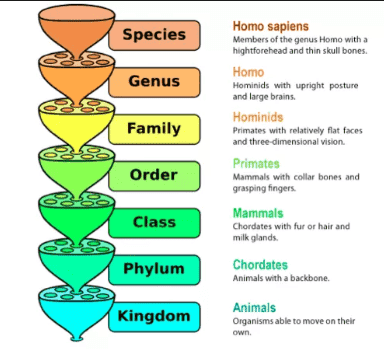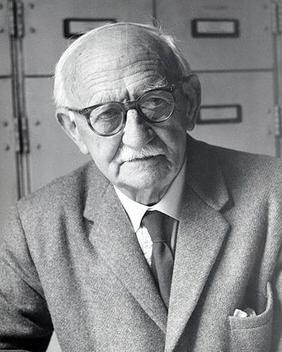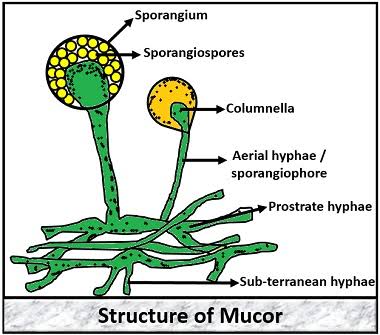LICHEN - INTRODUCTION, COMPOSITION, MORPHOLOGICAL TYPES, THALLUS STRUCTURE, REPRODUCTION
A. INTRODUCTION
Lichens are dorsiventrally thallophytic plants which are formed due to close association of an alga and a fungus. The fungal component of lichen is called mycobiont and the Algal component is called photobiont. The two organism is live together in intimate connection forming a compound thallus Called consortium.
In a symbiotic association between the two partners, the fungus lives saprophytically on Algal cells and obtains food from them. On the country alga gets benefited by fungi in providing water and nutrients. Fungus also protects Algal cells from high light intensity.
B.COMPOSITION OF LICHEN
Lichen consists of two main components, photobionts and mycobionts.
Photobionts- The Algal component of lichen is called photobionts. The photobiont is mainly Cyanophyceae and rarely chlorophyceae. Altogether 37 genera have been identified as lichen photobiont. These algae belong to blue green (cyanophyta) and green (chloroohyta). Lichen forming blue green algae are Nostoc , Anabaena, Stigonema , Chroococus etc common green algae are Chlorella , Cephaleuros etc.
Mycobionts- The fungal component of lichen is called mycobionts. The mycobionts mainly belong to Basidiomycotina rarely Deuteromycotina. Most of the ascomycetous Lichens belong to discomycetes. Dictyonema and Multiculavala etc, are some of the species of lichen forming genera of Basidiomycotina. There are 55 species of Lichen forming Deuteromycotina of which Blarneya hibernica is the most common.
C.MORPHOLOGICAL TYPES OF LICHEN
Lichen exhibits several morphological types. Hawksworth and Hill (1984) , describe the following types of lichen-
1. Leprose Lichen- This type is the simplest, here the thallus organization is very simple. The fungal hyphae does not enevelop the Algal cells throughout. This types of lichen grow superficially over the substratum and provide a powdery appaerence and therefore is called leprose. Example:- Leparia incana
2.Crustose Lichen- In this type, the lichen thallus is very closely adhered to the substratum and provide a crust like appearance on rocks, soil, tree barks etc. The Algal cell are covered by a distinct layer of fungal cell. It is very difficult to separate thallus from the substratum.
Some variations of crustose Lichens are as follow-
(a) Placodiod - Here the entire surface of the thallus is radially striate and contain raised marginal tissues. Example- Lacanora, Calaplaca etc.
(b) Squamulose- Here the outer surface contains overlapping scale like sauamules. Example- Psora
3. Foliose Lichen- In this type, thallus is flat, dorsiventral, leaf-like , well branched irregular and lobed margin. The thallus is attached to the substratum with the help of rhizoids like structure called rhizines. Externally they look like that of crinkled and twisted leaves. Example- Peltigera, Collema, Physcia etc
4. Fructose Lichen- In this type, the lichen thallus is vary in shape. They are well branched, erect or pedalous bushy which provide shrubby Structure I.e., twig like appearance example- Usnea , Cladonia, Letharia etc
5.Filamentous Lichen- In this type, the Algal component has the main role in the formation of the structure of the lichen thallus. The Algal partners is well develoved and filamentous which covered by a few fungal hyphae only. The Algal partners is dominant and as such named filamentous by Hawksworth and Hill (1984). Example- Racodium, Coenogium etc
 |
| Source wikipedia |
D. STRUCTURE OF LICHEN THALLUS
On the basis of internal structure of thallus, the lichen are divided into two groups namely homoiomerous and hetromerous lichen.
1. Structure of Homoiomerous Lichen thallus- The lichen thallus with the Algal component scattered uniformely between the fungal hyphae throughout is called Homoiomerous. In this type, the lichen thallus show the simple Structure with little differentiation. It consists of loosely interwooven mass of fungal hyphae with Algal cells equally distributed throughout. Example- Collema , Leptogium etc.
2. Structure of hetromerous lichen thallus- Most of the lichen belong to this category. They exhibit considerable differentiation and layered structure. Hetromerous lichen thallus- show the following Structure-
(a) Upper Cortex- It forms the upper surface which is generally thick and protective. The fungal hyphae in this region grow more or less vertically and are compactly interwoven to produce pseudoparenchymatous layer. The fungal hyphae are compactly arranged so that there is no intercellular space between the hyphae.
(b) Algal zone- It is the blue green or green zone which lies immidently beneath the upper cortex.
It consists of a network of loosely interwoven fungal hyphae with the Algal cell of green alga , intermixed with fungal hyohae. The Algal region is the photosynthetic region of the lichen thallus.
(c) Medulla- It contain the central core of the thallus. It is less compact and and consists ofoosely interwoven hyphae with large spece between them in certain regions. The fungal hyohae in this region are scattered and usually have thick wall. They run in all directions. The central hyphae of the medullary region usually run longitudinally.
(d) Lower Cortex- It forms the lower surface of the thallus and is composed of densely compacted hyphae. They may run prependicular to the surface of the thallus or parellel to it. Bundle of hyphae often arise from the surface of the , lower cortex and pentrate the substratum to function as anchoring organs. In some lichen species the lower cortex is absent.
 |
| Source Wikipedia |
E. REPRODUCTION
The common method of reproduction in lichen are by Vagetative, asexual and sexual methods-
1.Vagetative Methods- Lichen thallus- reproduce vagetavily by various methods - These are
(a) Fragmentation- It consists in the breaking up of the thallus into segments which are distributed to start new growth. Fragmentation is brought about by ageing and accidental. In ageing the older cells in the basal part of the thallus die and separate the branches or lobes, each of which grows into new thallus. Sometime larger portion of the thallus breaks accidentally from the parent thallus. Each of these broken part develops into new individuals.
(b) Soredia- These are small, rounded granules or bud lie out growths which develop in the form of a grayish white or grayish green powder in extensive patches usually over the upper surface or edges of the thalli of many species of lichen. Each soridium contain one or few Algal cells closely surrouy by a little weft of fungal hyohae produced by the branching of the hypha from the Algal regions.
(c) Isidia- These are small conical warts developed on the thallus of many Lichens. Isidis are usually constricted at the base and thus can easily broken off. Under the favourable condition each isidium grows into a new lichen thallus.
Lichen thallus also reproduce vagetavily by phyllidia, blastidia, goniocytes etc.
2.Asexual Reproduction- Lichen thallus reproduce asexually by various methods. These are-
(a)Conidia- In many lichen, conidia of different shape and size develop in multihypal Structure known as conidiomata. The conodiamata are embedded in flask shaped Structure , pycnidia . Each pycnidium appear to the exterior by means of ostiole. Conidiophore are developed from the inner lining of the wall pycnidium. Conidia are produced, terminally , laterally , or intercalary on conidiophores. Each conidium is colourless and may be cylendrical or sickle shaped or filliform in structure. Each conidium germinates by producing a germ hypha.
(b) Oidia- These are spore developed by breaking up Of small fragments of lichen thallus. The oidium germinates to produce lichen thanks.
3. SEXUAL REPRODUCTION
Sexual reproduction takes place by the production of specialized male and female reproductive Structures. Male reproductive structure is called spermogonium and the female reproductive Structures is called carpogonium.
(a) Spermogonia- In certain species of lichen pycnidia-like Structure are reported to as Spermogonia. Each spermogonium is a flask-shaped receptacle immersed in a small elavation on the upper surface of the thallus. It's open by a small pore, an ostiole , at the surface. The cavity of the spermogonium is filled with sterile and fertile hyohae. The fertile hyohae produce minute rounded cells at their tips. These are the male cells and are called spermatia. They are non motile and are produced in large number. The spermatia are set free in a slimy mass which oozes out through ostiole.
(b) Carpogonia- The carpogonium is a cellular filament. It consists of two portion- the lower coiled portion and upper straight portion. The coiled portion constitute the ascogonium. It is Multicellular and the cells are uninucleate. In certain species they are multinucleate. The ascogonium lies deep in the medullary region of the thallus. The Carpogonia- either develop from the hyphae or from the medullary region or from the hyphae deep in the Algal layer of the lichen thallus. The straight upper portion of the carpogonium is called the trichogyne elongated and separate. The terminal portion of the trichogyne ends in a long cell which project beyond the surface of the thallus.
(c) Fertilization- At the time of fertilization, several spermatia are lodge to sticky tip of the trichogyne. A few empty spermatia are found at the tip at the trichogyne -this seems that there protoplast have migrated into the trichogyne. But the actual migration of the male nuclei down the trichogyne has not been seen.
(d) Formation of ascocarp and ascospores- After fertilization several ascogenous hypha develop from the basal portion of the ascogonium. Asci are produced at the ends of these freely branched ascogenous hyohae . Two nuclei in a young ascus fuse to farm a diploid nucleus. This diploid nucleus divides and redivides to farm 8 haploid nuclei. The asci are uninucleate or binucleate. These asci bearing Structure are ascocarps.
Normally eight ascopores are formed in each ascus. They vary in colorur , shape, size and Structure. Ascopores are unicellular , transversely separate or both transversely and longitudinally separate.
On liberation each ascospore germinates by producing hyphal branch. This hyphal branch comes in contact suitable alga, ultimately lichen thallus is formed after the combined growth of the fungus and the alga.












0 Comments
If you have any query let me know.